Financial Insights on Wound VAC Machines
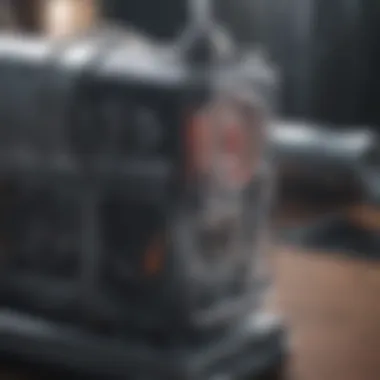
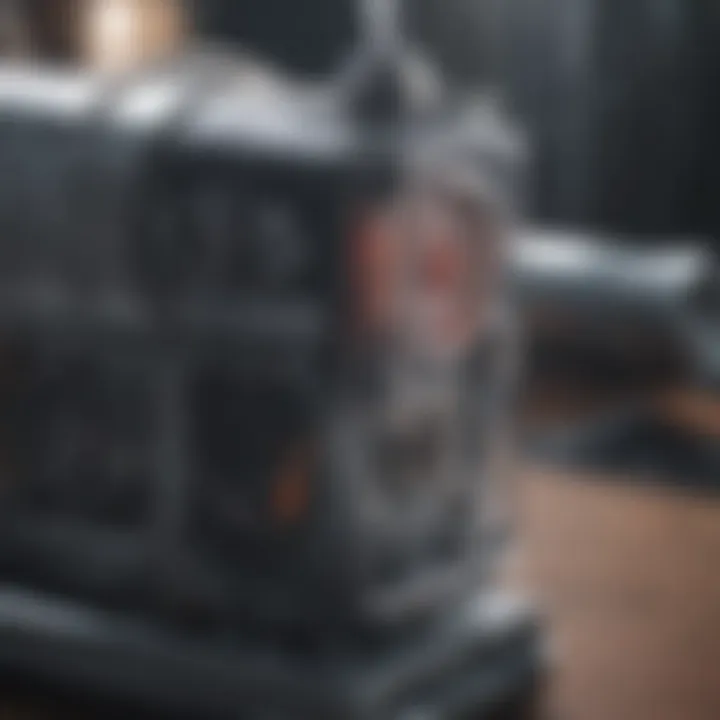
Intro
The cost of healthcare equipment can often resemble a labyrinth, with numerous turns and twists that complicate the simplest decisions. Among the various devices used in wound management, the wound VAC machine stands out not only for its advanced technology but also for its intricate financial aspects. Understanding these matters is crucial, especially for healthcare professionals and administrators who must navigate the complexities of patient care while remaining fiscally responsible.
This exploration delves into the financial factors surrounding wound VAC machines, addressing the various elements influencing their pricing. It’s essential to recognize that the purchase price represents just the tip of the iceberg. One needs to consider rental options, operational costs, and how insurance policies interact with these machines, as all these factors weave together to create a nuanced financial landscape.
As we embark on this examination, it will be crucial to grasp both the immediate and long-term expenses associated with using wound VAC technology. For anyone involved in healthcare, comprehending these intricacies can lead to better-informed decisions that ultimately enhance patient care while managing budgetary constraints effectively.
Article Overview
Summary of Key Findings
- Initial Costs: The upfront purchase price of wound VAC machines can vary significantly, influenced by brand, model, and features.
- Rental Options: In some circumstances, it might be more economical to rent rather than buy—this raises questions about the duration of patient care and associated costs.
- Operating Expenses: Regular maintenance, supplies, and consumables contribute to ongoing financial obligations that must be accounted for in the overall cost assessment.
- Insurance Coverage: Different insurers may have distinct policies regarding the use and reimbursement of wound VAC machines, which can greatly affect out-of-pocket costs for patients and healthcare providers.
Research Objectives
This article aims to illuminate the financial implications tied to various strategies for acquiring and using wound VAC machines. Our goals include:
- To explore a range of purchasing options—assessing the viability of renting vs. buying.
- To analyze ongoing costs associated with wound VAC treatment.
- To clarify the impact of insurance reimbursement on both providers and patients.
Key Results and Discussions
Main Findings
The examination of financial aspects surrounding wound VAC machines reveals several key insights:
- The price tag on these machines is only a fraction of the overall expenditure that healthcare facilities will encounter. It becomes apparent that continual costs such as maintenance and materials significantly influence the overall spending.
- Renting a wound VAC machine can offer flexibility, particularly for short-term needs. However, careful scrutiny is necessary to prevent unexpected surges in costs over extended periods.
- Insurance coverage remains a wildcard. Depending on the patient's specific plan, costs can be substantially different. This unpredictability can stretch budgets thinner than anticipated.
Implications of Findings
The implications of these findings extend beyond mere dollars and cents:
- Healthcare Providers: A thorough grasp of financial factors leads to informed decision-making that can enhance operational efficiency.
- Patients: By understanding potential costs, patients can engage more meaningfully with their care. Knowledge is half the battle when it comes to navigating the nuances of healthcare expenses.
- Administrators: Accurate forecasting and budget management rely heavily on a comprehensive understanding of these financial dynamics. It is imperative to have a lean strategy that considers both patient care and the bottom line.
"Financial acumen in healthcare is not just about cutting costs; it’s about optimizing resources for the best patient outcomes."
In summary, lightening the financial load of wound VAC machines requires a multi-faceted approach rooted in a solid understanding of both the evident and hidden costs associated with their operation. This awareness leads to more effective wound management solutions for healthcare professionals and patients alike.
Prolusion to Wound VAC Machines
In today’s medical landscape, understanding the financial implications of wound VAC (Vacuum Assisted Closure) machines is paramount. These devices have revolutionized the way healthcare professionals manage complex wounds, a key component in patient recovery. Getting the financial aspect right is not just about making a purchase; it's about ensuring optimal wound care while keeping costs in check. This journey through the financial aspects of wound VAC machines is designed to shed light on the various factors that influence costs and to provide a clear guide for healthcare providers, administrators, and patients alike.
Overview of Wound VAC Technology
Wound VAC technology employs a negative pressure environment to promote healing in chronic and acute wounds. By pulling fluid away from the wound, it encourages blood flow and tissue granulation. The process involves a specialized dressing connected to a vacuum pump that creates this negative pressure. Users often appreciate the notable efficiency this method brings to wound healing when compared to standard treatments.
- Key Components:
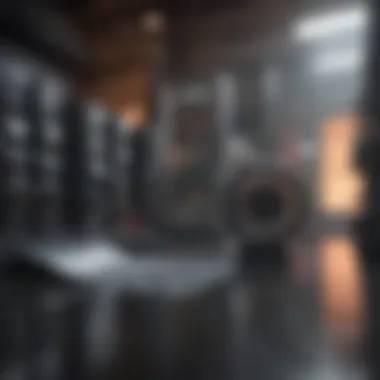

- Vacuum Pump: Generates the necessary pressure.
- Dressings: Specific materials that facilitate the healing process.
- Tubing and Connectors: Essential for maintaining a secure and effective system.
Understanding wound VAC technology is crucial as it lays the groundwork for evaluating the financial dimensions of acquiring and operating such machines. Dipping into the technical intricacies of this system helps make informed decisions regarding purchasing, rental, and ongoing costs.
Importance in Modern Healthcare
Wound VAC machines play a pivotal role in modern healthcare settings. Their use has expanded across various fields, from surgical recovery to treating diabetic ulcers. The positive impacts on patient outcomes are undeniable:
- Faster Healing Times: Patients experience significant reductions in healing time, which directly impacts care costs.
- Improved Patient Satisfaction: The benefits of reduced pain and quicker recovery lead to higher patient satisfaction rates.
- Comprehensive Wound Management: Wound VACs allow for a more structured approach to wound care, which can directly correlate with reduced hospital stays and fewer surgeries.
"Investing in technologies like wound VAC can translate to not just better patient outcomes but also economic advantages for healthcare providers."
Overall, these devices have carved out a place in both clinical practice and patient recovery narratives, demanding attention to the financial nuances associated with their implementation. Understanding the interplay between the benefits and costs of wound VAC machines is essential in navigating the complex landscape of modern healthcare.
Initial Purchase Costs
The upfront expense of acquiring wound VAC machines looms large for healthcare facilities, often acting as a gatekeeper to adopting this important technology. Understanding these initial purchase costs isn't just a matter of balancing budgets—it's about recognizing the value that effective wound care brings to patient outcomes and operational efficiency. With prices varying widely, factors influencing costs will need to be unpacked for a clearer picture.
Factors Affecting Equipment Pricing
When it comes to wound VAC machines, several factors can affect their price. These include:
- Brand Reputation: Established brands like KCI and Medela often carry premium prices due to perceived reliability and quality. Newer or lesser-known brands might offer more budget-friendly options but could lack the same level of support or warranty.
- Technological Features: Machines equipped with advanced monitoring capabilities or specialized dressings generally cost more. For instance, features like humidity control could increase the price, but they might also enhance healing rates.
- Regulatory Compliance: Compliance with healthcare standards influences manufacturing costs. If equipment needs specialized compliance checks or certifications, this drives the price up.
These costs all add layers of complexity to the financial decision-making process. Thus, understanding these variables can empower healthcare administrators to make informed choices, balancing quality with budget constraints.
Comparative Pricing Among Brands
It's not rare to see dramatic differences in pricing among various wound VAC brands. For example, while KCI might list their unit at a significantly higher price point than an alternative brand like Smith & Nephew, the differences go beyond just numbers on a screen.
To better illustrate:
- KCI: Generally priced at $1,500 - $2,500 depending on the model and features.
- Smith & Nephew: Typically falls within the $1,200 - $2,000 range.
- Medela: Offers units from around $1,300, known for their value in mid-tier options.
It's valuable to compare not only prices but also the features and service agreements each brand offers. Sometimes, spending a bit more can mean better after-sales support or innovative technology that could pay off in faster patient recovery times, hence reducing long-term costs.
Cost Variance Based on Features
Costs don't just align with brand names; they can fluctuate significantly based on the features included in each wound VAC machine. Different levels of functionality can add or subtract hundreds, if not thousands, of dollars from the initial price. Here’s a quick rundown of how features can impact costs:
- Basic Units: These often lack advanced sensing technology but are effective for standard wounds, typically costing around $1,000.
- Mid-Level Units: These offer features like adjustable vacuum settings and basic monitoring, averaging about $1,500 to $2,000.
- High-End Units: Top-tier machines encompass state-of-the-art technology, including real-time data analytics and customizable settings, priced generally above $2,500.
"Investing in higher-quality equipment can lead to better patient outcomes and potentially lower long-term operational costs."
In this light, the various price levels aren’t merely a matter of budget constraints; they also align with clinical outcomes that can affect overall healthcare costs. Thus, the initial capitalization of a wound VAC machine represents more than just the purchase itself; it is a gateway into comprehensive patient management strategies.
Rental Options for Wound VAC Machines


Navigating the financial landscape of wound VAC machines often leads healthcare professionals to consider rental options. These options can provide flexibility in managing costs, particularly for facilities or individuals who may not be ready to commit to a full purchase. Understanding the various dynamics involved in renting a wound VAC machine is essential. It encompasses a multitude of factors, from cost-effectiveness to availability and ongoing maintenance responsibilities.
Renting vs. Purchasing: A Cost Analysis
When weighing the decision to rent or purchase a wound VAC machine, one must conduct a thorough cost analysis. Purchasing a machine outright often comes with a hefty upfront cost, which may not be financially feasible for smaller practices. Conversely, renting offers lower upfront costs but requires careful consideration of the long-term implications.
Here are some key considerations:
- Upfront Costs: Renting typically requires a lower initial investment. This can alleviate immediate financial pressures, enabling facilities to allocate funds elsewhere, such as staffing or other supplies.
- Service Fees: Rental agreements may include service fees, which can vary based on usage and the rental provider's policies. It’s crucial to understand these fees and how they align with the healthcare provider's budget.
- End-of-Term Costs: When the rental period concludes, additional fees might arise. Understanding what these could be is essential in determining the total cost.
- Usage Frequency: If a facility or patient requires intermittent use of the machine, renting could be the more pragmatic option compared to purchasing.
Ultimately, a detailed comparison between the costs associated with renting and those linked to ownership will guide the decision-making process.
Finding Reliable Rental Services
Finding a trustworthy rental service for wound VAC machines can be a daunting task. Not all rental providers offer the same quality of service, so it’s vital to conduct thorough research. Here are some steps to ensure you find a reliable partner:
- Research and Reviews: Look for rental companies that specialize in medical equipment and have positive reviews. Online platforms like Reddit can be particularly helpful for gathering firsthand experiences from other users.
- Contact Providers: Engaging potential rental services directly can provide insights into their customer service and policy clarity. Ask specific questions regarding their terms, equipment maintenance protocols, and emergency support services.
- Compare Offerings: Not all rental companies will have the same equipment or service agreements. Comparing multiple providers can help suss out the most advantageous options available.
- Check for Insurance Support: A reputable rental company should help navigate the insurance aspect, ensuring that you understand how your coverage might apply to the rental costs.
"Choosing the right rental service is just as important as choosing the right equipment". A good provider can make the process seamless and ensure peace of mind.
Operational Costs
Understanding operational costs is crucial for anyone involved in managing wound care facilities or practices. These costs encompass not just the purchase or rental price but also ongoing expenses that can significantly impact a healthcare provider’s budget. By delving into operational costs, stakeholders can make informed decisions, ensuring both effective patient management and financial health for their organizations.
Consumables and Maintenance Expenses
When it comes to wound VAC machines, consumables represent a major portion of operational expenses. These consumables generally include dressing kits, canisters, and tubing, all essentials for the effective functioning of the VAC system. The costs of these items can add up quickly, making careful inventory management crucial.
Moreover, maintenance of the machines is non-negotiable. It’s essential to ensure that the device operates at its optimum level. Regular servicing checks, which might not be part of an initial budget plan, can prevent unexpected breakdowns and prolong the life of the equipment. A well-timed service visit can save resources in the long term – it’s like the old saying goes, "An ounce of prevention is worth a pound of cure."
Upon estimating these costs, it’s a good idea to track the usage of each consumable item. This can assist in predicting future expenses, enabling healthcare facilities to avoid potential financial pitfalls.
Staff Training and Management Costs
Training staff to operate wound VAC machines is another often-overlooked expense. Having knowledgeable personnel ensures the machines are used efficiently. The more skilled the staff, the better the outcomes for patients, which is ultimately what everyone desires.
Training sessions for staff may involve both time and resources. Healthcare facilities may need to invest in initial training for new hires, as well as ongoing education to stay updated with advancements in the technology. Implementing a training program can be costly but is vital. Skilled staff can help in achieving better patient outcomes, which may also impact reimbursement rates positively.
On top of training, there are also management costs to consider. This includes oversight to ensure all team members are adhering to protocols related to wound care and the use of VAC machines. Effective management often means additional administrative tasks for staff, which can inadvertently lead to increased labor costs.
Operational costs are often underestimated, yet they play a pivotal role in the financial health of healthcare facilities that provide wound care.
Striking the right balance between operational efficiency and patient care is the name of the game. Cutting corners can lead to higher costs in the long run, so investing wisely in operational costs can avoid penny wise, pound foolish situations. In the fast-paced world of healthcare, every saved cent adds up, leading to a more sustainable operational model.
Insurance Coverage and Financial Assistance
In the realm of wound care, understanding insurance coverage and financial assistance is crucial. For both healthcare providers and patients, navigating the costs associated with Wound VAC machines can be overwhelming. It isn’t just about the initial purchase or rental fees; financial aspects stretch into operational costs, maintenance, and patient management, making insurance policies a vital part of the conversation. Having a solid grasp of how insurance interacts with these machines can pave the way for better financial planning and enhanced patient outcomes.
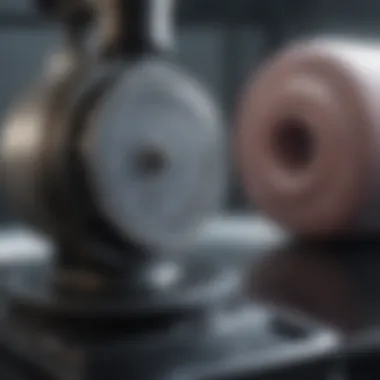
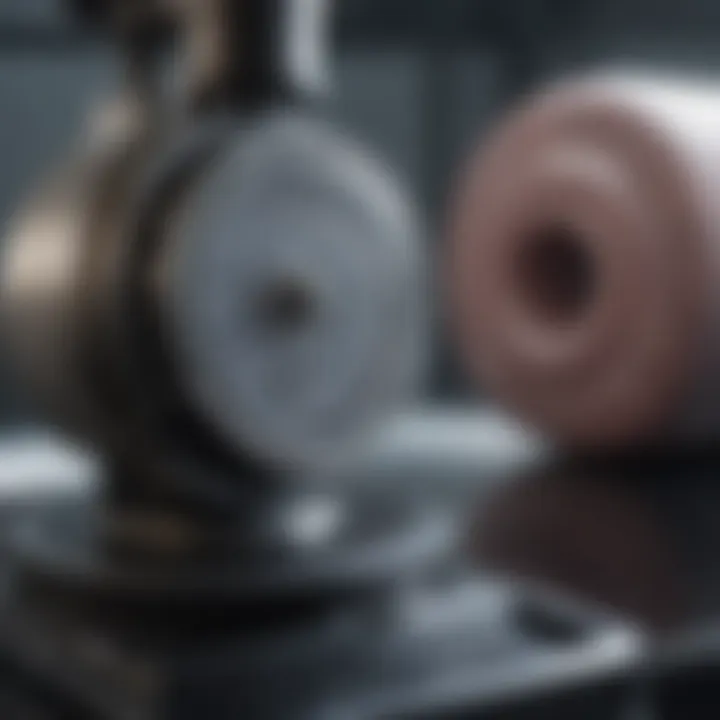
Understanding Insurance Reimbursement Policies
Insurance reimbursement policies often dictate how much coverage a healthcare facility can expect for utilizing Wound VAC machines. Many policies consider these machines to be essential for effective wound management; however, coverage can vary significantly among different insurers. Some key elements include:
- Pre-Authorization: Many plans require prior approval before they agree to reimburse for treatment with Wound VAC machines. This can involve a somewhat tedious paperwork process, and moving swiftly on this front is vital to avoid unexpected out-of-pocket costs for patients.
- Medical Necessity: Insurers usually determine reimbursement based on medical necessity. A well-documented case history that illustrates the requirement for such therapy can be beneficial.
- Billing Codes: Correctly used Current Procedural Terminology (CPT) codes related to Wound VAC therapy can ensure that healthcare providers receive the reimbursement they expect. Any errors in coding can delay payments or result in denials.
- Duration of Therapy: Sometimes, insurers will cover therapy only for a limited duration. Facilities must stay on top of timelines and regularly reassess the patient's needs for ongoing treatments.
In short, a deep dive into the specifics of insurance policies can help healthcare administrators and medical staff predict potential challenges and navigate reimbursement more effectively.
Patient Financial Assistance Programs
For patients facing financial hurdles, various financial assistance programs can serve as a lifebuoy in turbulent waters. Understanding these options can alleviate some of the stress surrounding unexpected medical expenses associated with wound care. Here are some of the notable programs and resources:
- Nonprofit Organizations: Several nonprofits offer grants or financial assistance for medical equipment and treatments. Organizations like the United Health Foundation can help in identifying resources tailored to specific needs.
- Hospital Charitable Programs: Many hospitals have programs in place to provide financial aid to underinsured or uninsured patients. These programs can sometimes cover portions of treatment expenses, making the financial burden lighter.
- Payment Plans: Some providers allow patients to pay off the cost of therapies in installments, rather than one lump sum, making it more manageable to cover out-of-pocket costs.
- Medicare and Medicaid Options: For eligible patients, these government programs may cover a portion of therapy costs, depending on individual circumstances.
Long-Term Financial Considerations
When delving into the realm of wound VAC machines, it's crucial to assess not just the immediate purchase or rental expenses, but also the long-term financial implications. Investing in wound care technologies often involves a slew of hidden costs and benefits that can only be discerned over time. One must weigh the total cost of ownership against expected outcomes to arrive at a prudent financial strategy. By understanding long-term considerations, healthcare providers can make informed decisions that enhance patient care while managing budgets effectively.
Evaluating Cost-Effectiveness in Wound Care
Incorporating wound VAC systems into clinical practice raises essential questions regarding their cost-effectiveness. The key here is to analyze the return on investment in terms of healing time and patient outcomes. A wound VAC may require a higher initial investment, but if it significantly reduces the length of hospitalization and fosters quicker healing, the long-term savings can be substantial.
When weighing cost-effectiveness, one might consider:
- Direct savings from reduced length of stay: Shorter hospital stays reduce room charges and provider fees.
- Reduced risk of complications: Enhanced healing can minimize the risk of infections and readmissions, ultimately saving on future treatment costs.
- Increased efficiency: Optimizing care pathways through effective wound management improves workflow in clinical settings.
Healthcare administrators should conduct a thorough cost-benefit analysis, factoring in the costs linked to potential complications if advanced wound management is overlooked. Cost-effectiveness isn't merely about numbers—it's about the overall value provided to the healthcare system and, most importantly, to patients.
Impact on Patient Outcomes and Healthcare Costs
The connection between wound VAC machines, patient outcomes, and healthcare costs is often seen as a complex interplay. High-quality wound care translates to better patient outcomes, which, in turn, has significant ramifications for overall healthcare expenditures.
To illustrate this point, consider the following factors about patient outcomes:
- Faster healing rates: Studies suggest that patients using wound VACs can experience up to 50% faster healing rates.
- Quality of life improvement: Rapid recovery means less time in discomfort or incapacitation, leading to enhanced quality of life for patients.
- Reduced recurrence rates: Efficient wound healing lowers the chances of chronic wound conditions, which are financially burdensome for healthcare systems.
From a broader perspective, when healthcare facilities utilize wound VAC technology efficiently, they are likely to see a significant dent in avoidable costs. This not only benefits the institution's bottom line but also increases patient satisfaction, creating a cycle of positive feedback for future investments in wound care technology.
Understanding these long-term aspects helps not just in numerical assessments but also enriches the dialogue around improving healthcare practices while maintaining economic viability.
By carefully evaluating long-term financial considerations, professionals in healthcare can not only strengthen their financial viability but also enhance the quality of care delivered to patients. Each decision made today can ripple through to future budgets, impacting both healthcare providers and patients alike.
Ending
The conclusion serves as the final touchstone for understanding the intricate financial sidelines of wound VAC machines. It's not merely a summary; it's a critical evaluation of how all the discussed elements converge to inform decision-making processes.
Summary of Key Findings
Throughout this article, several key insights have emerged:
- Initial Costs: The upfront purchase prices of wound VAC machines can vary substantially. Factors such as brand reputation, technological features, and market demand play crucial roles in determining these prices.
- Operating Expenses: Beyond the initial purchase, operational costs are a significant concern. Consumables, maintenance schedules, and staff training all contribute to the ongoing financial commitment required to utilize these machines effectively.
- Rental Options: Many healthcare facilities opt for rental agreements as a flexible financial solution. This could provide opportunities for managing cash flow while still ensuring access to advanced technologies.
- Insurance Influence: Understanding the insurance landscape is essential. Different policies may cover varying amounts of costs associated with wound VAC machines, affecting the net expenses individuals and facilities ultimately incur.
- Long-Term Investment Considerations: Evaluating these machines should not focus solely on their short-term costs but also consider how they impact patient recovery outcomes and overall healthcare costs in the long run. This means looking at every dollar spent as part of a larger picture.
Final Thoughts on Wound VAC Machine Investment
Investing in wound VAC machines is a decision that requires careful thought and deliberation. Facilities must weigh both their immediate financial capabilities against the long-term benefits these machines provide in enhancing patient care. Although it may seem daunting at first glance, considering the return on investment represented by improved healing times and reduced hospitalization durations can reshape your perspective.







